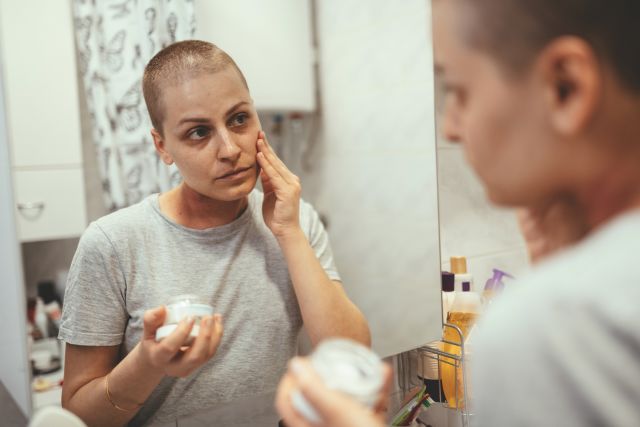Acute graft versus host disease (GVHD) is a common complication after an allogeneic stem cell transplant. It is estimated to affect more than half of people who undergo this type of transplantation. The most common symptoms of acute GVHD are skin symptoms—skin rash, reddened areas of the skin, dry skin, itching, and blisters. Acute GVHD can also involve the liver and the GI tract.
Why do these symptoms occur?
During an allogeneic stem cell transplant, stem cells called hematopoietic stem cells are taken from the bone marrow of a healthy donor (or donated umbilical cord blood) and transplanted into the person being treated.
Hematopoietic stem cells make blood cells, including white blood cells. White blood cells are part of the immune system, and help the body respond when there is an infection or damaged tissue that needs to be repaired.
After an allogeneic stem cell transplant, the stem cells (the graft) can develop into white blood cells that attack healthy tissues in the body they have been transplanted into (the host).
Skin symptoms that occur with acute GVHD—rash, blisters, reddening, dry skin, itching—are the result of these immune cells causing damage and inflammation in the skin.
If you have any form of GVHD, the number one thing you need to do is work with your healthcare providers. Your healthcare team may include different specialists depending on the parts of the body that are affected by GVHD. If you are experiencing skin symptoms, your healthcare team may include a dermatologist.
Tips for taking care of your skin
Your healthcare providers will always be your best source of information about how to care for your skin and other aspects of your health while living with acute GVHD. Here are some topics to review with your healthcare team:
- What skincare products to use. You’ll want to use skincare products that are fragrance free and gentle on the skin. Avoid products that contain alcohol, retinoids, or alpha-hydroxy acid when the skin is dry. Avoid antibacterial soaps and cleansers. Do not use products that exfoliate the skin. This applies to soaps, cleansers, moisturizers, lip balms, shampoos, conditioners, sunscreens, and make-up. Ask your healthcare providers for product recommendations and information on what ingredients to avoid.
- How to use your topical medications. Topical corticosteroids or other topical medications may be prescribed to treat skin symptoms in some cases. If you are treating with a topical medication, make sure you have clear instructions on how and when to use it and how to store it safely. Topical medications are typically applied before moisturizers.
- How to moisturize your skin. Moisturizers can help relieve itch and prevent the skin from breaking down. Ointments and creams are typically a better choice than lotions. Moisturizing should be done immediately after bathing. Moisturizing your hands is important after washing your hands, which should be done regularly to help prevent infections. When washing the hands, use lukewarm water and limit washing to 20 seconds to avoid drying out the skin.
- Guidelines for baths and showers. Discuss how to care for your skin when taking a bath or shower. You’ll want to keep showers to less than 20 minutes, but shorter showers are generally better, especially if you are bathing every day. Use cool or lukewarm water and follow the above guidelines for soaps, cleansers, shampoos, and conditioners.
- How to protect your skin from the sun. Apply sunscreen after moisturizing (and before applying makeup, if you wear makeup) and at least 20 minutes before going outside. Sunscreen should be broad spectrum with an SPF of at least 30. It’s also important to wear clothing that protects the skin from the sun and avoid being outside during the hours when sunlight is the strongest.
Acute GVHD tends to occur within the first 100 days after an allogeneic stem cell transplant. There is also chronic GVHD, which tends to occur later. Chronic GVHD can also involve the skin, liver, and GI tract, as well as many other organs. Because GVHD can occur at almost any time after a transplantation, always report any symptoms or changes in symptoms to your healthcare providers.




